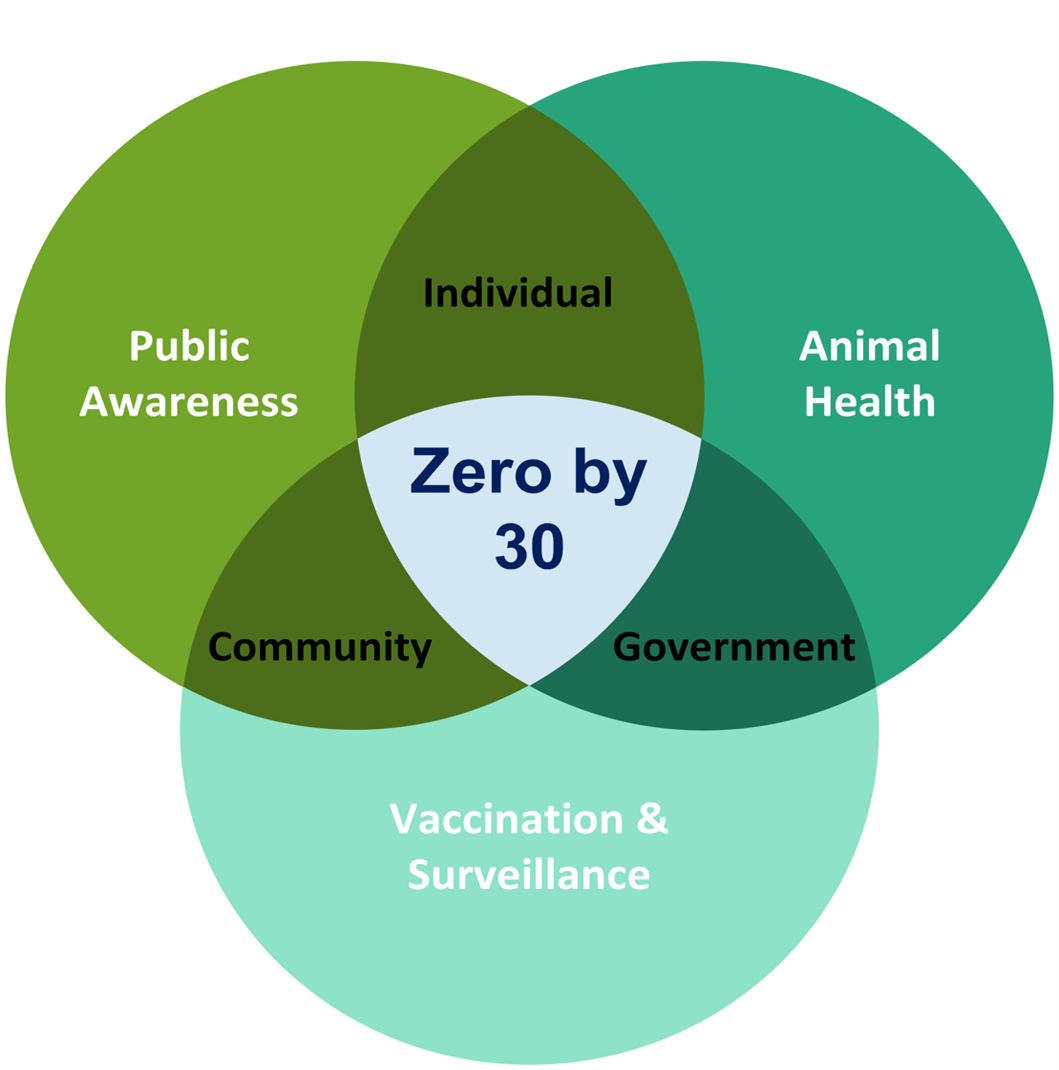Act now: You, Me, Community
Rabies is a zoonotic disease (transmitted between animals and humans), usually via a bite wound inflicted by an infected animal. It is often under-diagnosed, under-reported, and under-funded. Despite being an entirely preventable disease, rabies continues to claim the lives of tens of thousands of humans and animals across the Western Pacific region. Enhanced coordination, investment, and prevention strategies are critical to addressing the ongoing impact of rabies.
In the Western Pacific Region, over 10 000 human rabies cases were reported by eight countries; Cambodia, China, Indonesia, Lao People’s Democratic Republic, Malaysia, Mongolia, the Philippines, and Viet Nam, between 2013 and 2024. China has made significant progress in rabies control, reducing reported cases from 1128 in 2013 to 122 in 2023. In Lao People’s Democratic Republic, 44 human rabies cases were reported between 2021 and 2024. Malaysia has recorded 86 human rabies cases since 2017. In Viet Nam, rabies continues to cause 70-100 human deaths annually from 2013 to 2024. Indonesia reported 577 human rabies cases between 2019 and 2024. In the Philippines, 425 human rabies cases were reported in 2024, reflecting an upward trend since 2022 when 284 cases were reported.
Human Rabies Cases in Western Pacific Region
Progress has been made in the fight against rabies, with endemic countries establishing national rabies control programs. Many countries within the Western Pacific region have enhanced their capacities in areas such as vaccination, laboratory diagnostics, and the implementation of effective dog vaccination campaigns.
To achieve the global goal of zero human deaths from dog-transmitted rabies by 2030, several critical actions are needed:
- Strengthening disease surveillance for both human and animal rabies
- Promoting multisectoral collaboration across health, veterinary, and other relevant sectors
- Enhancing and sustaining rabies control capacities
- Raising awareness about rabies prevention and control, particularly in at-risk communities

Related link:
Regional Dashboard for Neglected Tropical Diseases in the Western Pacific Region